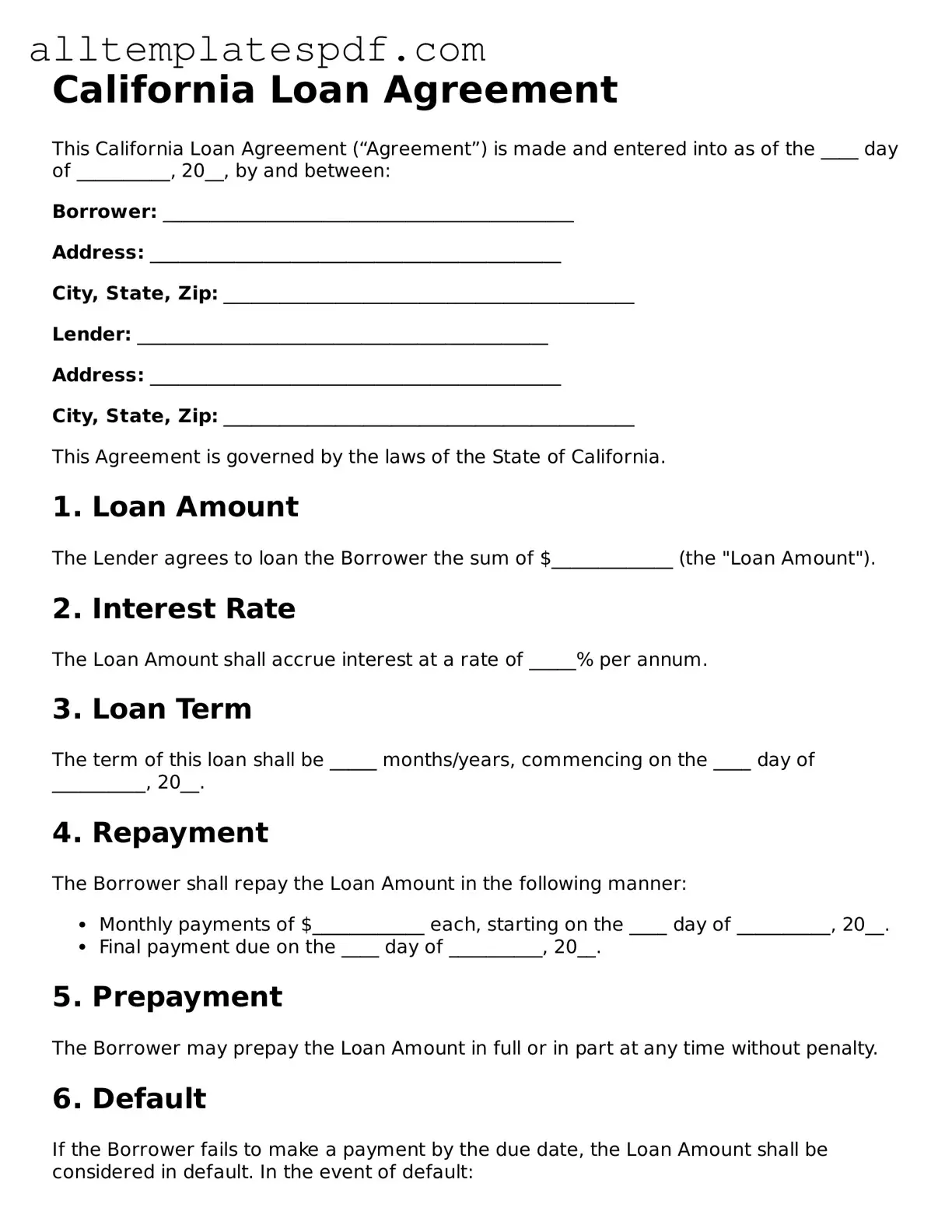Blank Loan Agreement Template for the State of California
A California Loan Agreement is a legal document that outlines the terms and conditions of a loan between a lender and a borrower. This form serves to protect both parties by clearly defining repayment schedules, interest rates, and other essential details. Understanding this agreement is crucial for anyone looking to secure or provide a loan in California.
Ready to take the next step? Fill out the California Loan Agreement form by clicking the button below.
Open Editor
